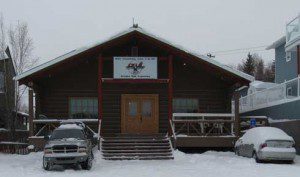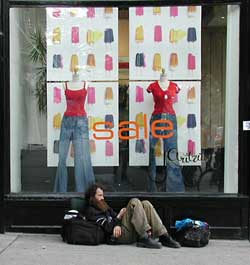Sounding the Territory
In the Canadian North, where CBC dominates the radio waves, Claudia Calabro finds one station is breaking new ground
Myself, I prefer buffalo more than moose,” Mike Beaver says when Wanda McLeod asks him how the kill tastes. As he explains the cooking, cleaning and sharing of the meat, McLeod gently asks if he checks the liver for diseases, and Beaver obliges, sharing the knowledge with the ease of someone who’s been hunting for years. It is 12:25 pm, on the CBC Radio One program Northwind, which McLeod hosts from Inuvik. With roughly 20,000 listeners daily across the Northwest Territories, CBC Radio North is the standard in the region, operating throughout the territories since 1958.
At the same time, on a different frequency, a noon-hour request show plays on CKLB, a private station from Yellowknife. The two stations are miles apart-literally and figuratively-but CKLB offers northerners an alternative. Primarily a music station, it encourages the participation of Aboriginal youth and focuses on local and Aboriginal content. That distinguishes it from the nation’s public broadcaster, which reflects local life with shows such as Northwind, but still emphasizes national news more than CKLB does.
Started by members of the Dene Nation more than two decades ago, CKLB broadcasts First Nations Assemblies live and participates in community events such as Folk on the Rocks, a yearly music festival in Yellowknife. Though it’s difficult for small independent radio stations in the North to secure accurate audience data, CKLB gauges its success through increases in ad revenue, listener feedback and website traffic.
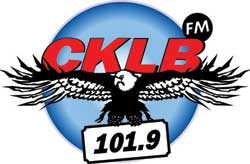 The station launched in 1983, roughly a decade after the Dene Nation formed the Native Communications Society of the Northwest Territories. With a mandate to preserve oral traditions and provide access to traditional languages and music, the society started a newspaper as well as television and radio stations. While these goals are far-reaching, CKLB’s resources aren’t. “The CBC’s budget is not limitless, but it’s not the same. They can be cute, have a symphony, all sorts of things. Our office is literally a log cabin filled with eight people,” says Andreas Tesfaye, sales and marketing manager at CKLB. “Everybody does everything. If I have to get my hands covered in shit, I will.” And though both stations want to reach people in different languages, CKLB has the added challenge of generating ad revenue in nine languages, including North Slavey, mother tongue for fewer than 1,300 Canadians.
The station launched in 1983, roughly a decade after the Dene Nation formed the Native Communications Society of the Northwest Territories. With a mandate to preserve oral traditions and provide access to traditional languages and music, the society started a newspaper as well as television and radio stations. While these goals are far-reaching, CKLB’s resources aren’t. “The CBC’s budget is not limitless, but it’s not the same. They can be cute, have a symphony, all sorts of things. Our office is literally a log cabin filled with eight people,” says Andreas Tesfaye, sales and marketing manager at CKLB. “Everybody does everything. If I have to get my hands covered in shit, I will.” And though both stations want to reach people in different languages, CKLB has the added challenge of generating ad revenue in nine languages, including North Slavey, mother tongue for fewer than 1,300 Canadians.
CKLB’s content is much lighter than CBC’s. A typical news item on the private station might be an awards ceremony honouring the region’s top athletes or a community meeting, without additional commentary. Joking that the programming doesn’t include anything like CBC Television’s the fifth estate, Tesfaye admits the station is uncritical of assembly decisions. “Usually those who are looking for more hard news content have come from the South.”
Indeed, CBC North is often a training ground for young journalists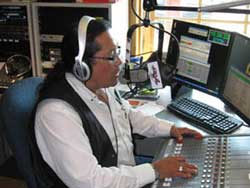 from other parts of Canada. A year and a half after moving up to Inuvik, Philippe Morin became the associate producer of Northwind. Although he had a background in newspaper journalism, Morin had no professional radio experience when he arrived. John Agnew, regional manager for CBC North, says although it primarily employs journalists from the South he’d like to see this change. CBC provides rigorous technical training, he says, but journalism experience is a prerequisite and it’s difficult to find locals with the required skills. According to the last census, only two percent of Aboriginal residents in the NWT are university graduates, compared with four percent of Aboriginal citizens across the country, and far below the national overall average of 15 percent. The unemployment rate among Aboriginal Canadians in the NWT was more than double the national rate of 6 percent in 2007. William Greenland, a Gwich’in speaker from Inuvik, worked at CBC on and off during the late 1980s and mid 1990s, but personal problems and alcoholism interfered with his career. Greenland found the technical training helpful, but wasn’t able to make decisions there. “I was just an announcer and was told what to do,” he says. “I felt something was missing.”
from other parts of Canada. A year and a half after moving up to Inuvik, Philippe Morin became the associate producer of Northwind. Although he had a background in newspaper journalism, Morin had no professional radio experience when he arrived. John Agnew, regional manager for CBC North, says although it primarily employs journalists from the South he’d like to see this change. CBC provides rigorous technical training, he says, but journalism experience is a prerequisite and it’s difficult to find locals with the required skills. According to the last census, only two percent of Aboriginal residents in the NWT are university graduates, compared with four percent of Aboriginal citizens across the country, and far below the national overall average of 15 percent. The unemployment rate among Aboriginal Canadians in the NWT was more than double the national rate of 6 percent in 2007. William Greenland, a Gwich’in speaker from Inuvik, worked at CBC on and off during the late 1980s and mid 1990s, but personal problems and alcoholism interfered with his career. Greenland found the technical training helpful, but wasn’t able to make decisions there. “I was just an announcer and was told what to do,” he says. “I felt something was missing.”
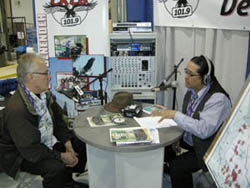 He found it at CKLB. Director of radio since 2007, Greenland has a daily show and helps train aboriginal youth in journalism. This past year the station joined with the Aboriginal Sports Circle of the Western Arctic to create the Junior Radio Reporter program, preparing five young people to cover the North American Indigenous Games on Vancouver Island. “I hosted the first show, but I told the kids, it’s not about me, it’s about you, ” says Greenland. “You need to come back with the stories.”
He found it at CKLB. Director of radio since 2007, Greenland has a daily show and helps train aboriginal youth in journalism. This past year the station joined with the Aboriginal Sports Circle of the Western Arctic to create the Junior Radio Reporter program, preparing five young people to cover the North American Indigenous Games on Vancouver Island. “I hosted the first show, but I told the kids, it’s not about me, it’s about you, ” says Greenland. “You need to come back with the stories.”
Marvin Apples felt like fainting from the pressure when he heard that. Nevertheless, Apples, who grew up in Behcho Ko, a small town outside Yellowknife, completed the program despite struggles with reading and school work and says, “It was the best thing I ever did.”
Earlier this year, CBC also ran an outreach program, sending a team of six to the Sahtu Dene hamlet of Deline to create a radio documentary with the community, focusing on its traditional history and the cultural gap between the younger, English-speaking generation and the Slavey-speaking elders. CKLB’s junior reporter program, however, stresses giving youth responsibility. “I watched them on air and I started to cry,” says Greenland, “It made me think, I came here with a grade-seven education, and here I’ve trained all these young kids!”
At 12:55 p.m. on Northwind,McLeod says goodbye and “mahsi cho,” which means “thank you” in Gwich’in. Hundreds of kilometres away, Apples sits through another day of school before heading to his new job at the Rae Edzo Friendship Centre, a community centre with a nightly broadcast. Life has been busy lately, juggling school and work, but he laughs it off, saying simply, “I like a challenge.”


